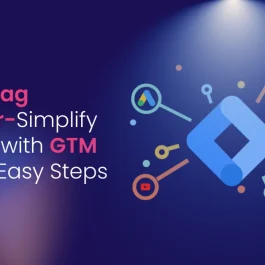5 min read
 In the ever-evolving landscape of customer service, businesses are leveraging technology to enhance user experiences. Conversational artificial intelligence (AI) is at the forefront of this digital transformation, revolutionizing the way companies interact with their customers.
In the ever-evolving landscape of customer service, businesses are leveraging technology to enhance user experiences. Conversational artificial intelligence (AI) is at the forefront of this digital transformation, revolutionizing the way companies interact with their customers.
What is conversational AI?
Conversational AI technology makes it possible for humans and machines, such as chatbots, smart devices, wearables, and virtual assistants, to communicate realistically through text or speech.
In the past, users have not always had the best experience with conversational AI. However, more people are looking for ways to use technology in their lives, both personally and professionally, as a result of recent advancements in the field, such as the release of ChatGPT.
Table of Contents
What Makes Conversational AI Work?
Conversational AI is made up of several key components that work well together to produce a dynamic and engaging user experience. Among these elements are:
-
Natural Language Processing (NLP)
An aspect of artificial intelligence called “natural language processing” (NLP) trains machines to comprehend, interpret, and generate human language. Algorithms are used to evaluate sentence structure, extract meaning from text, and facilitate natural conversational interaction between humans and machines.
-
Learning through Machine Learning
Enhancing the capabilities of conversational AI is largely dependent on machine learning. Through data-driven learning, these algorithms adjust to user preferences, allowing the system to deliver more customized and pertinent responses gradually. In addition to improving the user experience, this dynamic learning process encourages natural conversation.
-
Voice Recognition
Conversational AI can now comprehend spoken language thanks to voice recognition technology. In order to facilitate voice-based interactions, it translates audio inputs into textual data. By facilitating natural speech interactions between users and the AI system, voice recognition improves accessibility and enriches the conversational experience.
-
Dialog Management
Dialogue management controls the dialogue that takes place between users and AI. It guarantees seamless transitions, retention of context, and logical conversations. The AI system can respond meaningfully to users’ complex or fragmented inputs by maintaining conversation context, which makes for a smooth and interesting interaction.
What is the Mechanism of Conversational AI?
Even though the majority of people have probably (much to my dismay) asked Alexa questions in the past, conversational AI, the technology that powers Alexa’s response, is probably still a mystery.
Understanding the related technologies that come together to enable human-computer conversations is the first step towards understanding conversational AI.
Conversational AI’s place in modern customer experience and the way it is changing the way customers interact with brands
-
The Development of AI Conversations:
The term “conversational AI” describes the application of artificial intelligence technologies, such as machine learning and natural language processing, to make machines able to comprehend, interpret, and react to human language. Voice-enabled apps, chatbots, and virtual assistants can have smooth, interactive conversations with customers thanks to conversational AI in the customer service domain.
-
24/7 Availability and Instant Response:
Supporting customers around the clock is one of the main benefits of conversational AI in customer service. AI-powered chatbots and virtual assistants are available around the clock, guaranteeing that clients can get help whenever they need it, in contrast to human agents who have set working hours. This ability to respond instantly to questions and problems improves user satisfaction and makes for a more satisfying experience in general.
-
Personalized Interactions:
Conversational AI programs are made to pick up on and adjust to the unique tastes and habits of each user. With constant communication and data processing, these systems are able to provide extremely customized answers and suggestions. Customers have a more customized and engaging experience as a result of this personal touch, which also helps them feel appreciated and understood by the brand.
-
Efficient Query Resolution:
Conversational AI is excellent at answering repetitive and routine questions, freeing up human agents to work on more difficult and strategic assignments. Teams that provide customer service can more effectively manage their resources by automating the resolution of common issues. This improves the overall effectiveness of the customer service process by streamlining operations and facilitating quicker query resolution.
-
Multi-Channel Support:
Consumers engage with businesses via a variety of digital channels in the era of modern customer experience, such as social media, messaging apps, and websites. These channels are easily integrated with conversational AI, offering a unified and consistent user experience across all platforms. The AI system can preserve context and provide a consistent experience regardless of the channel a customer uses to communicate, such as voice commands, Facebook Messenger, or online chat.
-
Continuous Learning and Improvement:
AI systems that can have conversations are dynamic and can learn new things all the time. Over time, these systems improve their comprehension of user intent and hone their responses by means of feedback mechanisms and data analysis. This flexibility guarantees that Conversational AI’s modern customer experience stays up to date and meets changing customer expectations.
-
Reduced Customer Friction:
Through the provision of a conversational interface, conversational AI lowers customer friction during interactions. Users can ask questions in natural language, and the AI system can comprehend them and give answers that make sense. Users have less of a learning curve when communicating in this natural way, which makes interactions more approachable and user-friendly.
What Amounts of Customer Experience Are Conversational AI Changing?

Conversational AI is altering customer experiences in a number of ways:
A more personalized user experience: Conversational AI enables businesses to offer their clients a more tailored experience. This is accomplished by understanding the needs and preferences of the user through the data that the chatbot has gathered.
Companies that implement faster and more efficient customer service procedures can provide customers with better, more timely service. This enables chatbots to reply to multiple customer inquiries simultaneously. They can also work around the clock, which is a huge advantage for businesses, and route customers to the right agent, reducing wait times.
Enhanced advertising: Businesses can increase automation and enhance their conversational marketing skills with conversational AI. This is accomplished by first understanding the customer’s needs through the use of the chatbot and then offering relevant online content marketing to them.
Instantaneous client support: Real-time customer support is possible with conversational AI. This implies that companies can respond to inquiries and grievances from clients right away, greatly raising client satisfaction levels.
Enhanced involvement of customers: By offering prompt feedback and stimulating dialogue, chatbots can maintain customer engagement. This contributes to strengthening the bond between the company and its clients.
Conclusion
In customer service, conversational AI is more than just a fad—it is a strategic necessity for companies looking to provide outstanding customer experiences. The advantages of incorporating conversational bots are numerous and include 24/7 accessibility, tailored interactions, effective query resolution, and multi-channel support. As technology develops further, companies that adopt and use these intelligent systems will surely maintain their competitive edge by offering flawless and fulfilling customer service. Conversational customer service is the way of the future, and companies that invest in this game-changing technology stand to gain from increased customer satisfaction and loyalty.
Published: November 16th, 2023








